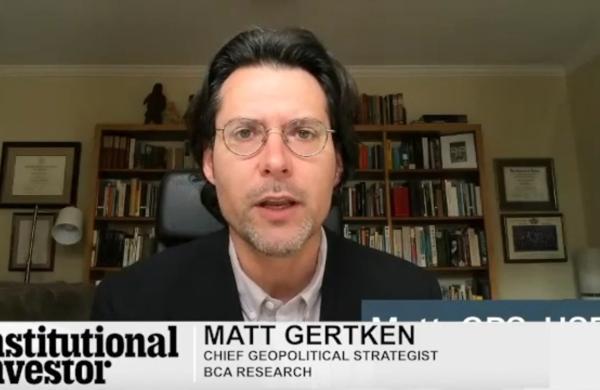In many respects, alternative investments appear to constitute, for lack of a better term, the most plausible alternative for insurance portfolios. They take an idiosyncratic approach to beating the market in an environment in which traditional fixed-income insurance investments may be increasingly problematic.
The inherent risks of alternative investments notwithstanding, the diversification that comes from the pursuit of unconventional sources of return can enhance returns in insurance portfolios heavily concentrated in low-yielding fixed income with minimal incremental risk. Simultaneously, they can moderate portfolio volatility. The models used for pricing private equity and real assets, while reflecting public market inputs, as a rule exhibit lower volatility for equivalent returns. Moreover, many hedge funds that invest in publicly traded equities do so with strategies designed to mitigate public market volatility.
Yet perhaps most crucially, alternative investments give insurers the means to capture a premium for both the excess liquidity in their investment portfolios and the relative predictability of their liabilities.
Across the insurance industry — and even perhaps within individual companies — the definition of alternative investments can vary widely. We at J.P. Morgan Asset Management include under the alternatives category hedge funds, real assets (both real estate and infrastructure equity) and private equity, grouping them together on the basis of their regulatory treatment and their fundamentals. Insurers in the U.S. list these assets under Schedule BA. Of these alternatives, private equity and real assets tend to be very illiquid. Hedge funds vary in liquidity but tend to be much more liquid than other alternatives.
Alternative investments share a risk factor and primary source of return that set them apart from such asset classes as equities and fixed income. The bulk of traditional assets’ returns and volatility derives from moves in the larger markets in which they participate. Alternatives, by contrast, seek to add to returns or subtract from volatility with often proprietary factors identified or developed by their managers. Alternatives might realize their gains from the information asymmetries found in esoteric or undeveloped markets or from trades that exploit transient anomalies in established markets.
Historically, insurers have concentrated portfolios in fixed income because of its minimal impact on earnings and capital volatility. So whereas an incremental allocation to illiquid assets like alternatives might consume an outsize portion of an insurer’s total adjusted capital — capital available to cover unexpected losses — it can also deliver comparably large diversification benefits.
Most alternative investments generate much of their alpha over lengthy holding periods. With their long-dated liabilities, life insurers in particular have an institutional capacity for the patience required for an investment of that nature to pay off. The long view gives them the flexibility to rebalance alternatives distributions according to market conditions. Life insurers can also use surplus premium income to invest consistently through rising and volatile markets, so that alternatives’ good years can offset the bad. This institutional version of the retail investor’s dollar cost averaging adds the dimension of time to diversification across asset classes and risk factors, so that the higher returns can come in a smoother return stream.
Just as insurers have a longer time horizon to match alternatives’ expected payouts, they also have the optimal liquidity profile. Liquidity is the public insurance company’s proverbial double-edged sword. For the policyholder, the risk lies in not having enough. For the shareholder, it lies in having too much. Typically, the balance of liquidity favors policyholders. Life insurers and property and casualty companies have held reserves in excess of the most extreme annuity redemptions and catastrophic losses in recent history. Even as they have maintained this cushion of liquidity, however, a persistent low-yield environment challenges public companies to preserve their dividend, and a rallying stock market raises expectations that they will increase it.
We modeled a small allocation to alternatives — 5 percent for property and casualty insurers and 3 percent for life insurers, which have larger balance sheets — on top of ten years of actual investment results for a composite of insurance companies with little or no exposure to alternatives. During the 40-quarter period that began in 2004 and ended with the fourth quarter of 2013, the hypothetical alternatives allocation would have enhanced results 83 percent of the time.
Those extra returns demand an extra level of skill. Conventional investment results conform to readily identifiable cycles; they tend to converge on a benchmark mean. By contrast, alternative investment results tend to diverge. That tendency has a critical implication: Median returns in alternative investing don’t mean much.
A study by consulting firm McKinsey & Co. found that private equity returns in a given vintage year ranged from gains of 50 percent for the top managers to losses of 30 percent for those at the bottom. By comparison, top-quartile long-only equity funds outperformed the median manager by 0.7 to 2.3 percentage points per year over the past decade, according to Chicago-headquartered financial data firm Morningstar.
Success in alternative investing feeds on itself. The top managers see the more promising deals. Since 2000, the consistency of manager outperformance in the top quartile of private equity funds has declined, as it has among alternatives managers in general. Stronger competition; faster global economic growth; and, in the case of private equity, subtler ways of creating value beyond cookie-cutter financial engineering all help explain the trend.
Beating the market today depends not only on managers’ ability but also on how their skills coincide with market opportunity and macroeconomic circumstances. Alternative investments don’t lend themselves to “set it and forget it” management. Effective due diligence in the current environment calls for a well-reasoned, exhaustively researched view of how a manager’s methods will fare in a constantly shifting dynamic of opportunity.
The potential of alternative investments for the insurance investor thus comes with a warning label: that the growth opportunities are only compelling to the top managers, combined with ongoing and rigorous investor oversight.
Insurers already possess the appropriate scale, the right time frame and credibility. They can make investments small enough for their risk budgets to accommodate yet big enough to move the dial on returns. They have a time horizon compatible with that of alternatives managers; insurers’ ability to capitalize on liquidity premiums and invest consistently over time gives them a cash flow that parallels that of alternative investments. Not least important, insurers’ reputation as long-term institutional investors can add to an alternatives manager’s credibility and leverage in the deal-making universe.
Matt Malloy, managing director, is head of the institutional solutions and advisory group at J.P. Morgan Asset Management in New York.






